In 2022, Yeshiva University Museum (YUM) received an Institute of Museum and Library Services (IMLS) grant to collaborate with the Center for Jewish History to digitize 61 wimpels in the museum’s collection, edit entries in the museum database (emu), enhance the metadata in the center’s digital asset management program (rosetta), and make the images available to the public in the Center’s online database. [click here to view the wimpels on line]. The project goal was threefold: a pilot to digitize and make all the museum’s holdings available online; to enable the general public, researchers and students to have safe, easy access to this treasure trove of material culture and historic and genealogical information; and to protect the wimpels which are fragile.
Wimpels were created from the 16th to the mid-20th century by German-speaking European Jews of Germany, Bohemia, Alsace, Denmark, Switzerland, and the United States to mark the birth of a son. They are long Torah binders made from several rectangular pieces of cloth, embroidered or painted with the boy’s name and that of his father as well as a Hebrew blessing, and decorated. The blessing is one recited at the circumcision expressing the hope that the boy “grow to Torah, to huppah (marriage canopy), and good deeds.” The boy often presented his wimpel to his synagogue on the occasion of his first visit, and it was later used to wrap the Torah from which he read for his Bar Mitzvah, and on the Shabbat before his marriage.
The decoration could be finely executed work by an accomplished painter or embroiderer, or very simple. Common decorative elements include the letters themselves, and illustrations of a Torah and a marriage canopy. Some wimpels were decorated with Biblical figures, people (usually a bride and groom), the zodiac sign under which the boy was born, scenes from fairy tales, toys, or holy sites in Israel.
The wimpels in the museum collection date from the 17th to the mid 20th century. They are very long – one in the collection measures over 18 feet. There is no surface large enough to display these textiles should a researcher wish to study them. Handling can put the paint at risk of flaking, and the embroidery at risk of catching and pulling. Digitization was the ideal way to enable the wimpels to be shared in their entirety.
The Museum’s collection of wimpels comes from several sources, public and private. The earliest collection of wimpels was donated to Yeshiva University by Jewish Cultural Reconstruction (JCR). This organization was established in Germany in 1947 to collect and redistribute Jewish Cultural property for which owners could not be found. Items were given to libraries, museums and universities, mostly in the United States, Israel and Britain. Yeshiva University received a number of items from Jewish Cultural Reconstruction that were turned over to the Museum after it was founded in 1973. The second institutional donor was Congregation Shaare Hatikvah of Washington Heights, a community in which many German Jewish immigrants settled before and after World War II. The museum received a total of 41 wimpels from theses two sources, dating from 1816 to 1951.
Collectors, including the Jesselson Family and Max Stern, donated six wimpels, and the Museum received an additional fourteen from individual families.
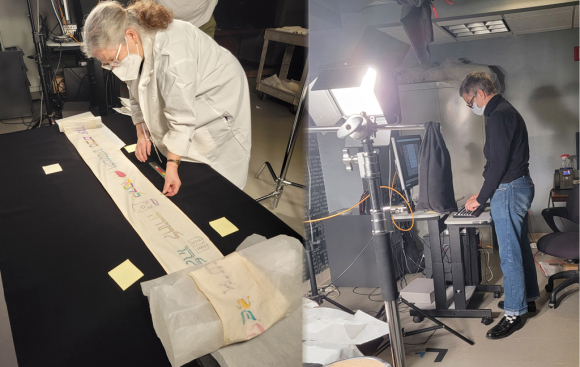
Gail Alterman and Jennifer Rodewald working on binder digitization
Since the binders are long and fragile, one of the Museum’s textile team, Gail Alterman, worked with the Center’s Jennifer Rodewald, Creative and Digital Services Manager. Each wimpel was unrolled a section at a time, photographed, and rerolled. The digital images were then stitched together, so that each wimpel can be examined as a whole and in detail.
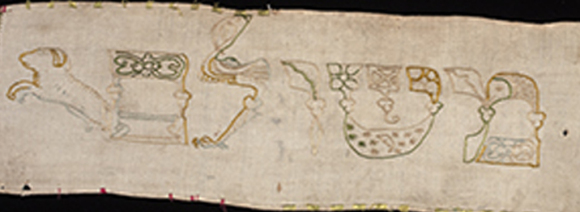
This is a detail from the oldest wimpel in our collection, dating to 1643. It was made for the son of Meshullam Schalit. Unfortunately, the section with the boy’s name is lost. Letters forming the words are outlined in thread, and then filled with decorative motifs. Some, such as the lamed here, form the shapes of birds or animals, a popular decorative treatment in manuscripts known as zoomorphic letters.

An embroidered wimpel made in 1722 to celebrate the birth of Moshe son of Shimon Wolf Oppenheim. begins with the figure of Moses holding the tablets. It includes some charming townscapes, but also, as one frequently finds on wimpels, some illustrations of the text. A man holding a Torah follows the wish that the boy grow to learn Torah, and a bride and groom follow the word huppah or marriage canopy.
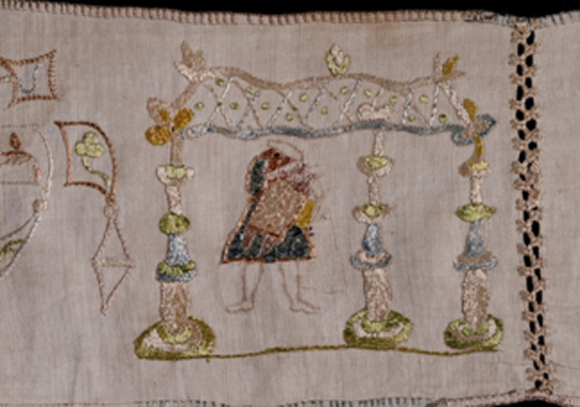
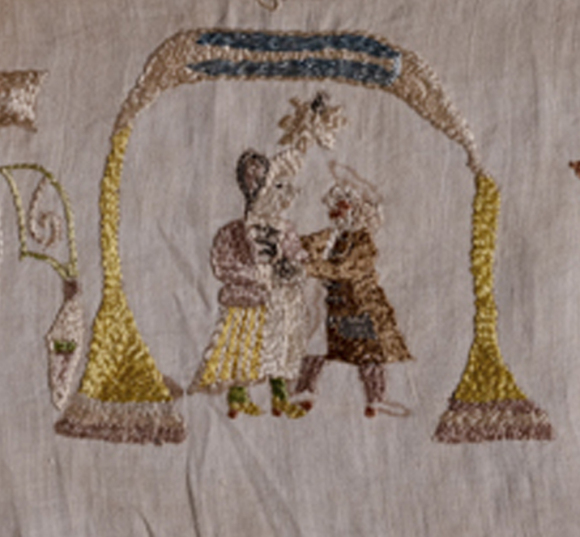
This painted wimpel, acquired from JCR, was made in 1930 for Naphtali (Hans Werner Hirsch), son of Shmuel. It gives us a different view of the contemporary world as the decorative motifs consist of illustrations from fairy tales starting with the figures of a boy and girl probably meant to be Hansel and Gretel and Little Red riding Hood.
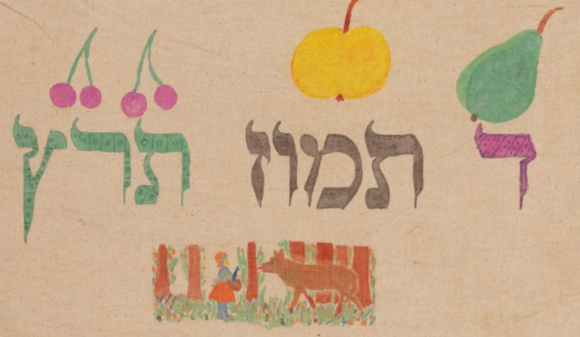
There are also toys including a wheeled soldier riding a horse. Further on, we have a flowering candelabrum decorating the wish that the boy grow to learn Torah to signify that the torah is a tree of life, though there is also a depiction of an open Torah. The letters of the word
huppah flank another candelabrum.
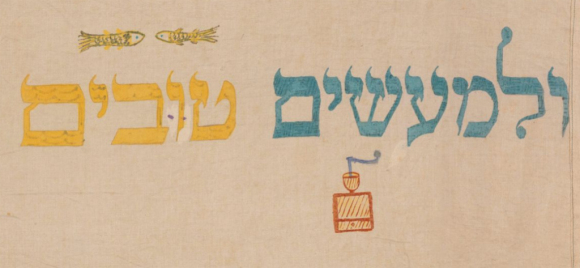
I haven't been able to figure out why there is a coffee or spice grinder under the words "good deeds" on this wimpel. The last image is that of a young boy with side curls and skullcap.
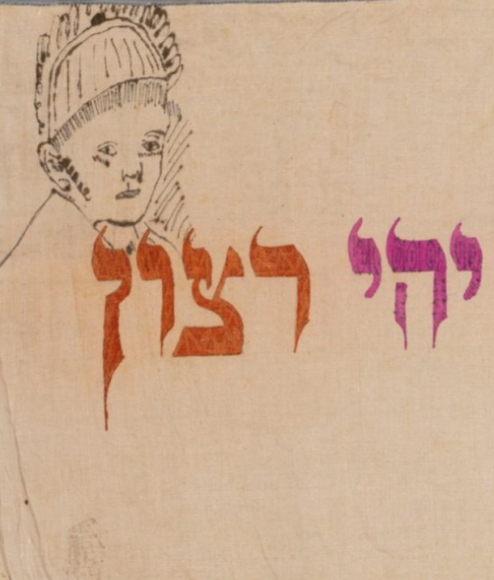
The final wimpel I will share with you today was acquired from Congregation Shaare Hatikvah and was made for Shmuel (Michael Sam Reinheimer) the son of Yaakov in 1949.
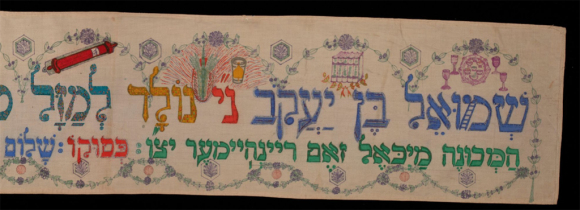
In this case, we know the painter, Reuben M. Eschwege who was a cantor, teacher, and mohel as well as an artist. He was born in Germany, where he attended the Jewish school taught by his father. Graduating from the Jewish Teachers Seminary in Wurzburg in 1911, he served for twenty-five years as chief cantor of a Wurrzburg congregation. Eschwege resumed his cantorial career upon his arrival in New York in 1940. The decoration consists of religious and secular motifs and illustrations of the text itself. The former include a Passover Seder plate surrounded by four cups of wine, the five books of Torah, a lulav and etrog, a shabbat table and another set for Havdalah.
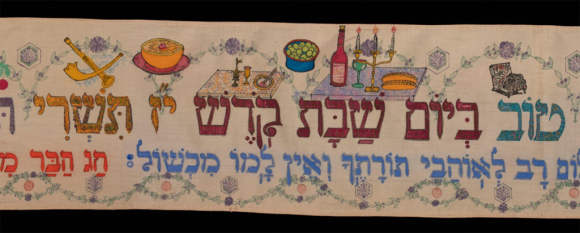
The text of the wimpel is illustrated with a dressed Torah, a bride and groom under the marriage canopy, and a charity container representing good deeds.
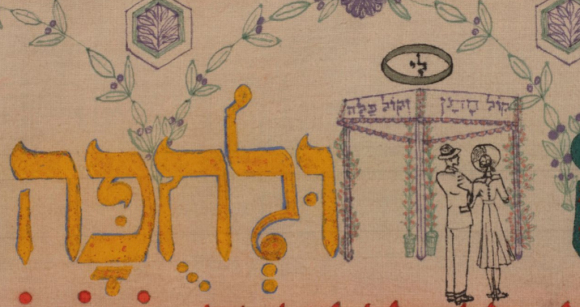
The proud artist even signed his creation with a stamp on the reverse of the wimpel.
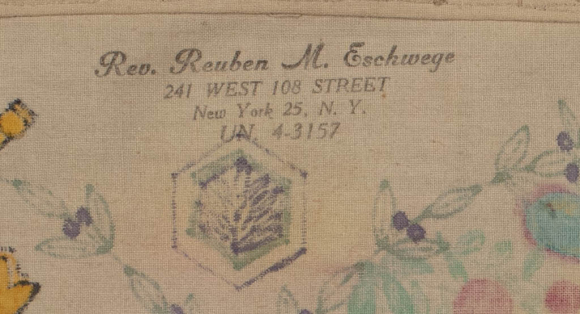
The religious and secular world revealed by the decoration on our wimpels is a fascinating study, and I strongly encourage you to visit it at your leisure here.
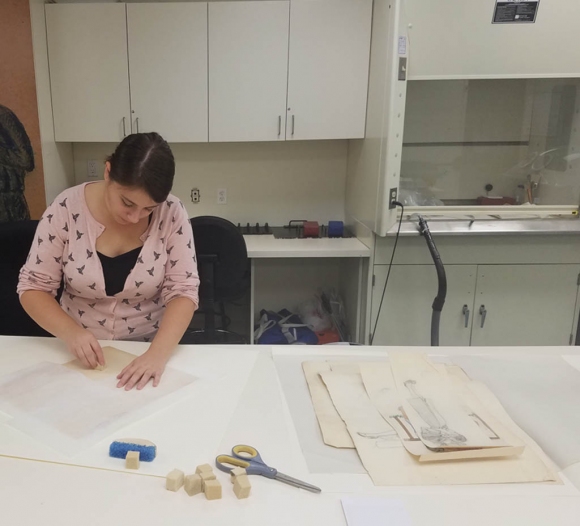
Comments
Share Your Comments: